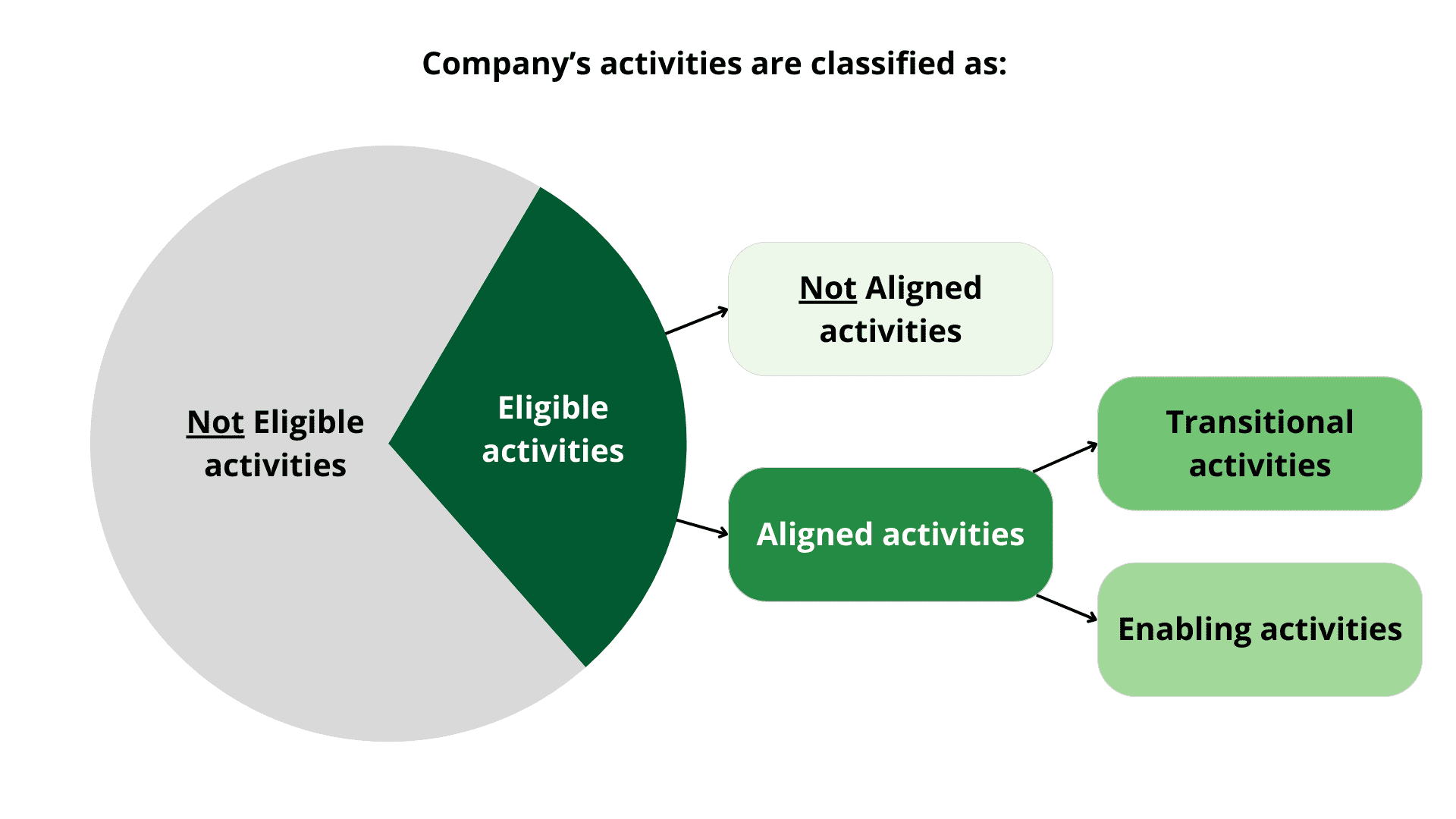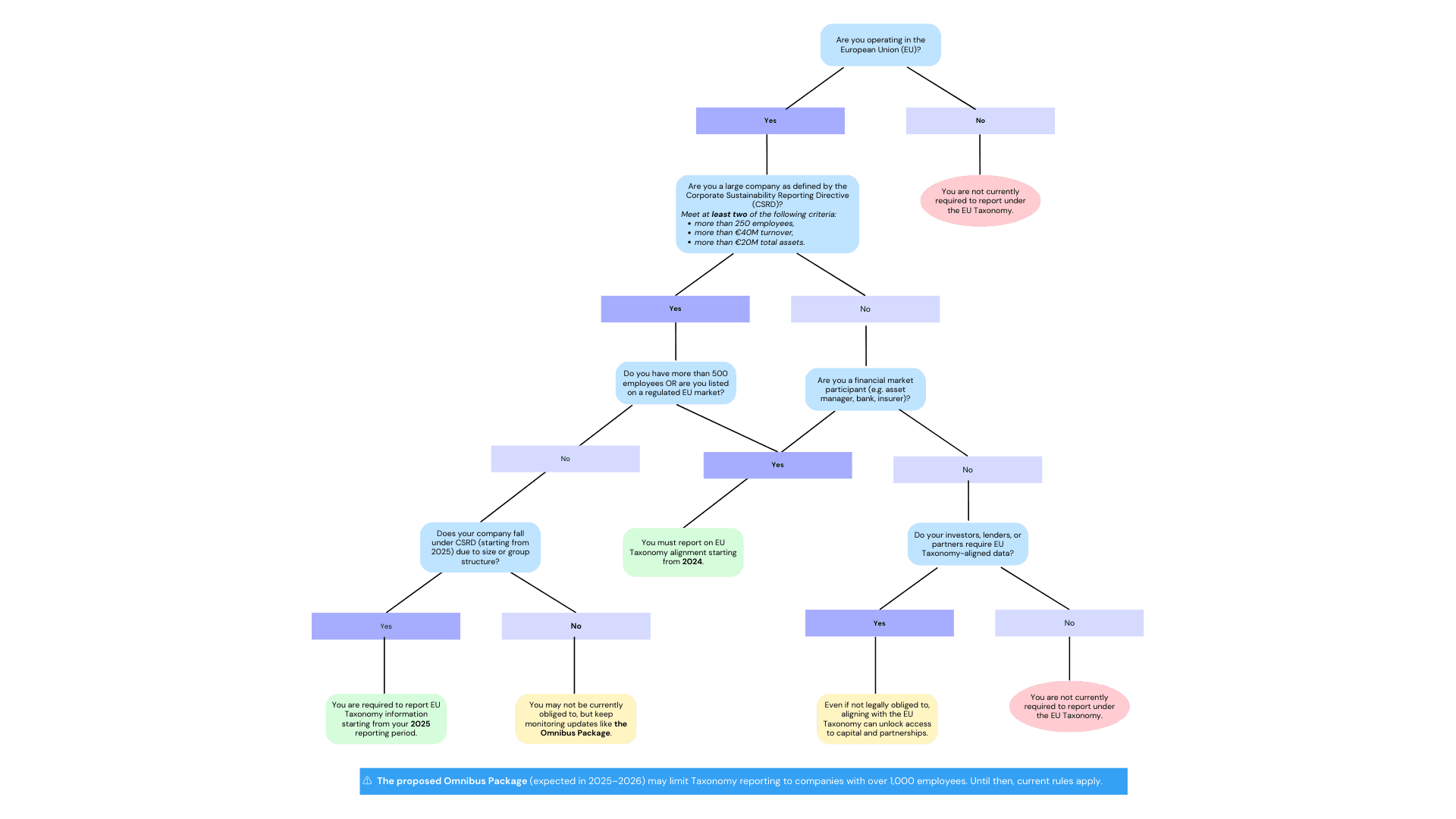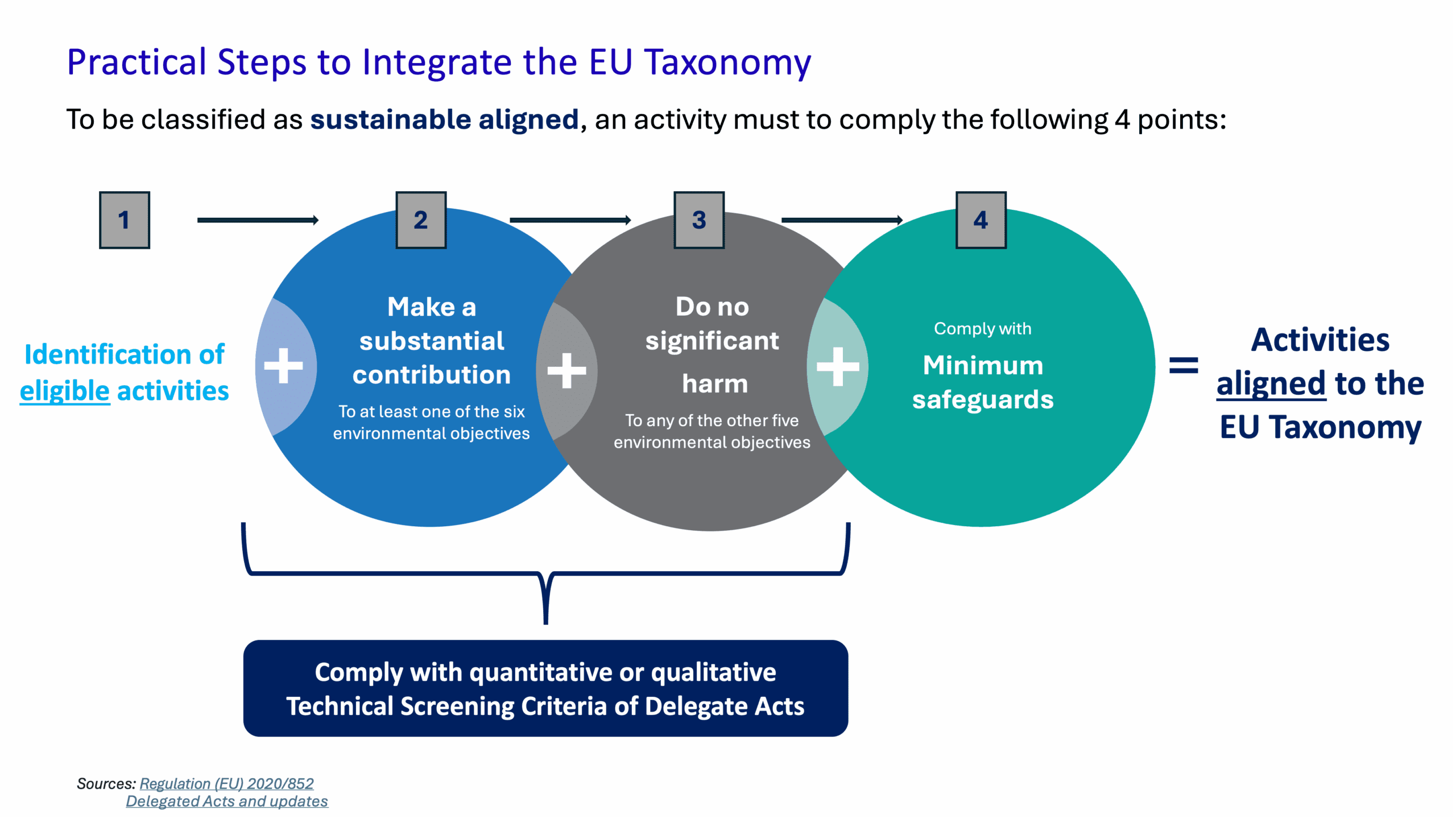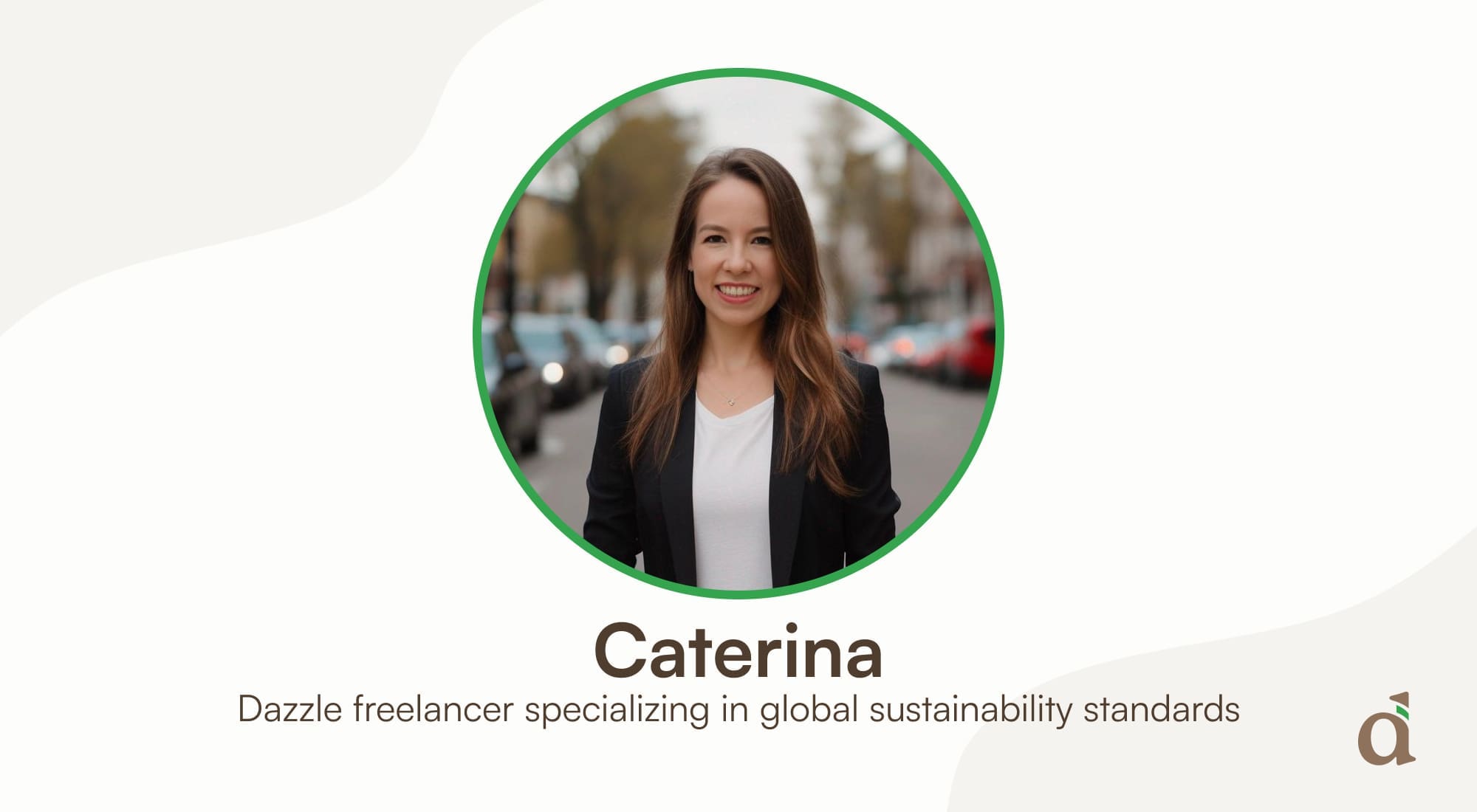About the author
Caterina Aita is a dedicated sustainability consultant and project manager with a passion for guiding organizations in integrating environmental, social, and governance (ESG) practices. Originally from Trieste, Italy, she has called Panama City, Central America, home for the past two years. With a Master’s in Sustainable Energy from Brunel University London, Caterina specializes in helping industrial and financial businesses align with global sustainability standards, such as the EU Taxonomy and the Green Deal.
She has collaborated with leading consultancy firms, including Ernst & Young (EY) and SCS Consulting, and PlusValue, where she honed her skills and deepened her expertise in the sustainability field.
As a freelancer, she works with companies to reduce their environmental impact, manage sustainability projects, and engage stakeholders. Fluent in Italian, Spanish, and English, she is known for her expertise in non-financial reporting and regulatory compliance. Caterina’s approach goes beyond consulting—she is also passionate about coaching organizations to adopt sustainable practices that foster long-term value for both the business and the environment.
Do you know how sustainable your business is? Can you quantify it? The EU Taxonomy Regulation is a tool that helps businesses measure how sustainable they are, and as a result, report in compliance with new laws, and show potential investors all their green efforts!
This guide to the EU Taxonomy Regulation helps you to understand how to manage the complex demands of this law by covering:
- Need-to-know information
- A glossary of essential terms
- If it applies to your business (Spoiler: it will sooner or later!)
- How to get started today
-
Why do I need consultancy on this?
Did you know that your ambition to improve on and comply with ESG factors can directly impact your company’s ability to receive investments and fundings? This is just one of the reasons why you need this article, so keep reading.
Why does the EU Taxonomy regulation exist?
Imagine you’re the CFO of a growing manufacturing company. Your investors are asking about your sustainability efforts, your clients are demanding greener supply chains, and suddenly, banks are offering better terms and conditions—but only if you can prove your environmental credentials.
Enter the EU Taxonomy Regulation, a classification system that defines what counts as a truly sustainable economic activity. No more vague green claims—this regulation sets clear, science-based criteria, ensuring that businesses aligning with sustainability goals gain the competitive edge.
Think of it as a financial passport to the green economy. If your business meets the EU Taxonomy’s objectives, you could unlock better investment opportunities, improved stakeholder trust, and regulatory compliance. The question is: will your company qualify? Or will your competitors get ahead while you’re left struggling to catch up?
What jargon do I need to know?
| Term | Definition |
|---|---|
| EU Taxonomy | A dynamic, continuously evolving EU Regulatory tool that defined a classification system by which economic activities are classed as environmentally sustainable or not to guide investments towards green initiatives. |
| Sustainable Economic Activity / Eligible activities | An activity that is reported in the list of the EU Taxonomy Regulation that it could significantly contribute to one or more of the six environmental objectives, does no significant harm to others, and meets minimum social safeguards. |
| Environmental Objectives | Six goals under the Taxonomy Regulation: (1) Climate change mitigation, (2) Climate change adaptation, (3) Sustainable use and protection of water and marine resources, (4) Transition to a circular economy, (5) Pollution prevention and control, (6) Protection and restoration of biodiversity and ecosystems. |
| Substantial Contribution | A criterion requiring that an economic activity directly supports one/or more of the environmental objectives in a significant and measurable way. |
| Do No Significant Harm (DNSH) | A principle ensuring that while contributing to one objective, an activity must not cause harm to the other five environmental objectives. |
| Minimum Safeguards | Basic social and governance standards businesses must comply with to ensure respect for human rights, labor rights, and anti-corruption measures (e.g., OECD Guidelines, UN Guiding Principles on Business and Human Rights). |
| Technical Screening Criteria (TSC) | Detailed requirements that determine whether an activity substantially contributes to an environmental objective and meets DNSH criteria. |
| Taxonomy-aligned | Describes an economic activity or investment that meets the criteria set out in the EU Taxonomy (substantial contribution, DNSH, and minimum safeguards). |
| Transitional Activities | Activities that aren’t fully green but are essential to the transition towards a climate-neutral economy, provided they meet strict efficiency and environmental performance thresholds. |
| Enabling Activities | Activities that help other sectors or activities reduce their environmental impact (e.g., manufacturing renewable energy components). |
| Not Sustainable Activity / Not Eligible | Activities that are not included in the EU Taxonomy Regulation list. Your activity may be considered "sustainable" in a general sense, but if it is not yet classified under the Taxonomy's official list of Sustainable/Eligible Activities, it does not qualify under the regulation’s framework. |
| Greenwashing | Misleading claims about the environmental benefits of a company’s activities or investments — the Taxonomy aims to combat this by setting clear criteria. |
| Non-Financial Reporting Directive (NFRD) | EU legislation that required large companies to disclose ESG-related information, now replaced by the below described directive (CSRD). |
| Corporate Sustainability Reporting Directive (CSRD) | An updated directive expanding the number of companies required to report on sustainability and aligning reporting standards with the Taxonomy. |
| SFDR (Sustainable Finance Disclosure Regulation) | A regulation requiring financial market participants to disclose how they integrate sustainability risks and Taxonomy alignment into their products. |
| Environmental and Climate Delegated Acts | A set of legally binding criteria, published in 2021 and 2023, that defines what constitutes a substantial contribution to all objectives (climate and environmental) — a key component of the Taxonomy. |

Do I need to be compliant with the EU Taxonomy? (Zoom in on image to find out!)

How can I get started today?
Integrating the EU Taxonomy into your business processes can be facilitated by several tools designed by the EU Commission to guide and support you.
The EU Taxonomy Navigator is an online platform offering a range of resources to simplify the understanding and application of the EU Taxonomy. It provides businesses with practical guidance to meet reporting obligations efficiently. The most useful tools that you can find in this platform are:
- EU Taxonomy Compass
Instead of reading all the pages of the Delegates Acts, you can find all the information in a more interactive and easier way in this section. Here you can find the list of potential sustainable activities and its criteria.
- EU Taxonomy Calculator
This tool will help you to calculate turnover, CapEx and/or OpEx for the activities identified. Here you can download the Excel table that the EU Taxonomy requires you to use to report.

Why do I need consultancy on this?
Navigating the EU Taxonomy regulation can feel overwhelming—especially with technical screening criteria, evolving delegated acts, and complex reporting requirements. A sustainability reporting consultant brings specialized expertise to help your business not only comply, but also gain a strategic edge.
To align with the EU Taxonomy, a professional consultant will support you in:
1. Identifying eligible economic activities
Not all business operations are covered under the EU Taxonomy, yet. A consultant will support you in analyzing your business model and value chain to identify which activities fall within the official list of Taxonomy-eligible activities, and which are outside scope for now.
2. Assessing technical screening criteria
Each eligible activity must meet specific environmental criteria. A consultant will support you in the analysis of these technical screening requirements, including:
- Environmental objectives (e.g. climate mitigation)
- “Do No Significant Harm” (DNSH) principles
- Minimum social safeguards
This step is highly technical and requires deep regulatory knowledge.
3. Performing KPI calculations (Turnover, CapEx, OpEx)
You’ll need to calculate and report how much of your revenue and investments align with the EU Taxonomy. A consultant will support you to:
- Review your financial data
- Calculate Taxonomy-aligned KPIs
- Prepare the required reporting templates (Excel format)
4. Integrating the process into your reporting systems
EU Taxonomy alignment isn’t a one-off task, it’s a process that must be embedded in your annual reporting. A consultant helps to:
- Design internal procedures
- Coordinate with your finance, risk, HR, engineering and sustainability teams
What is the Omnibus Package and does it affect me?
Have you heard of the Omnibus Package the EU is currently discussing? It could significantly change whether you need to comply or not. Consulting with a sustainability reporting consultant will help give you the clarity you need here.
The Omnibus Package is a crucial regulatory update that could significantly reshape who must report under the EU Taxonomy and how. One of the key proposals is to limit the reporting obligation to large EU companies with over 1,000 employees, which could exempt many mid-sized companies currently preparing for compliance.
However, nothing is final yet—the package is still under discussion and likely won’t be adopted before late 2025 or 2026. That means companies still need to comply with existing requirements under CSRD and the EU Taxonomy Delegated Acts. At least for now.
Update July 2025:
In July 2025, the European Commission adopted a new Delegated Act that simplifies the application of the EU Taxonomy for companies, reducing the administrative burden and the volume of data required in reports. Among other measures, it introduces a materiality-based approach, simplifies reporting templates, and allows companies to opt to apply these simplifications already for the 2025 financial year (although they will become mandatory starting from 2026). Currently, this Delegated Act is under scrutiny by the European Parliament and Council, so the existing obligations remain in force until its final approval and entry into effect.
If you’re unsure how this affects your business, this is exactly where I can help. I support companies in navigating these evolving regulations, assessing current obligations, and preparing strategically for future changes. If you’d like a quick consultation to clarify your position, please feel free to contact Dazzle today and mention my name!
In summary
Being compliant with this regulation will help you to:
- Understand how sustainable your business is.
- Attract potential investors and new talent.
- Improve brand reputation/your business’s public image/how clients perceive your business.
- Gain easy access to grants, funding and loans.
In not complying with this law, your company can receive a fine and be less competitive on the international market.
However, navigating this regulation alone can be nerve-wracking. Hopefully, this article has given you the essential information to take your first steps. If you think that this regulation is still something difficult to manage, don’t hesitate to reach out to us at Dazzle.


